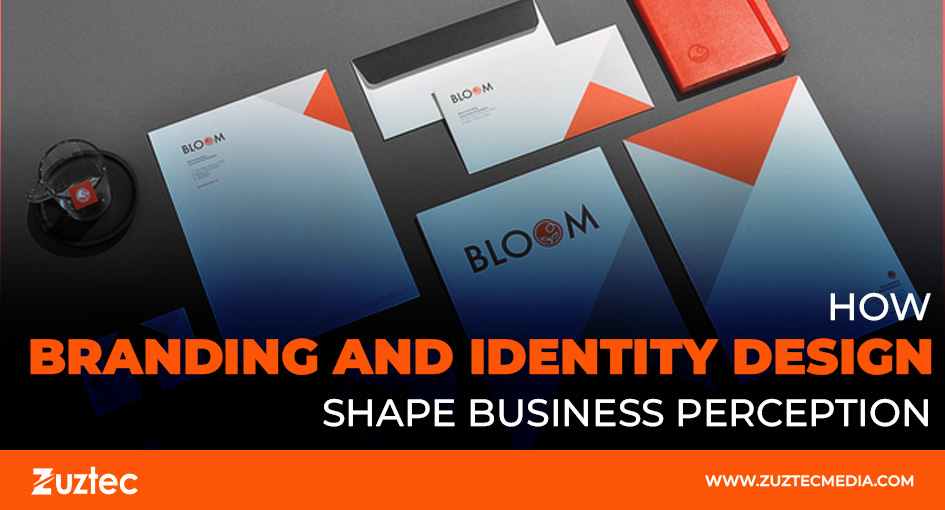
How Branding and Identity Design Shape Business Perception
Creating a successful business goes beyond offering a quality product or service—it’s also about how your brand is seen and remembered. In today’s competitive landscape, perception matters just as much as performance. This is where branding and identity design come into play. These elements help define how your business looks, feels, and communicates with the world.
Branding is the foundation of your company’s voice, vision, and values. It defines what you stand for and how customers should feel when they interact with you. Identity design, on the other hand, turns that foundation into visual assets—like logos, color palettes, typography, and brand guidelines—that help you present your message clearly and consistently.
You can stand out from the competition, develop trust, and create enduring emotional bonds with your audience with effective branding & identity design. It’s not just for big corporations—small businesses, startups, and personal brands benefit just as much from having a professional and consistent identity.
Think about the brands you remember most. Their visuals are usually clear, memorable, and aligned with their personality. That kind of recognition doesn’t happen by accident—it’s built through careful design choices that support the brand’s strategy.
In this article, we’ll explore what branding & identity design mean, how they work together, and why they are essential for long-term business success. Whether you’re starting fresh or refining your current image, understanding these concepts will help you build a brand that not only looks great but also feels right to your customers.
Branding And Identity Design Create A Strong Business Foundation
Branding & identity design are often grouped, but they serve distinct roles. Branding is the broader concept—it includes your mission, values, tone of voice, customer promise, and emotional appeal. It defines your brand’s personality and what you want people to think or feel when they hear your name.
Identity design is the visual expression of that brand. It includes everything from your logo to your business cards, website layout, packaging, social media graphics, and more. These design elements help communicate your brand’s message at a glance.
Together, these designers help businesses establish a consistent image. This consistency builds credibility. When customers see the same look and feel across your website, ads, and product packaging, they trust that you’re professional and reliable.
One of the main benefits of professional identity design is clarity. Clear, polished visuals make it easier for customers to understand who you are and what you offer. This is especially important for new businesses trying to break into crowded markets. A strong identity can immediately make a brand feel more established and trustworthy.
Why Cohesive Branding Drives Customer Connection And Loyalty
Customers are more likely to engage with a brand that feels familiar, authentic, and aligned with their values. Branding & identity design play a vital role in creating this connection. When done well, they make your business feel human, relatable, and trustworthy.
One of the key reasons branding works is that it tells a story. Through tone of voice, visual style, and consistent messaging, your brand can evoke emotion and establish a narrative that customers relate to. This emotional appeal often drives purchasing decisions more than facts or features.
Design supports that storytelling by visually reinforcing the mood and message of your brand. For example, a wellness brand might use calm colors and soft fonts, while a tech startup might go for bold, modern visuals. These design choices aren’t just decorative—they shape how your audience feels when they interact with you.
At the midpoint of your brand’s growth, investing in refined branding and identity design can also help you reach new markets or reposition your message. A design refresh can attract a different demographic or clarify your purpose as your business evolves.
Ultimately, strong branding isn’t just about visuals—it’s about alignment. When your visuals, voice, and values all point in the same direction, customers feel a stronger sense of trust and loyalty.
How To Build And Maintain An Effective Brand Identity
The first step is to define your brand strategy. This includes your brand’s purpose, positioning, and personality. Are you aiming to be innovative and cutting-edge? Friendly and approachable? Luxurious and exclusive? Knowing how you want to be perceived helps designers create the right look and feel.
Next comes the visual development phase. This includes designing your logo, selecting brand colors, choosing typography, and establishing design patterns or graphic elements. These visuals should work together to support your brand personality and appeal to your target audience.
A comprehensive brand style guide is essential for long-term consistency. This document outlines how your logo should be used, what colors are acceptable, how to pair fonts, and what types of imagery fit your brand. It ensures that everyone, from your marketing team to external partners, represents your brand consistently.
Consequently, branding and identity design are not optional—they’re essential to shaping how customers perceive, understand, and trust your business. When your brand tells a clear story through thoughtful design, it becomes easier to connect with customers, stand out from competitors, and build lasting value.

